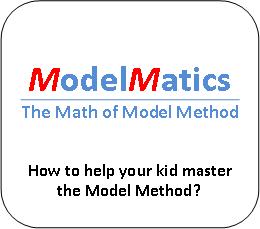

|
The Place Holder Concept is derived from the Part-Whole Concept . Quite frequently, questions involving the Place-Holder Concept can be easily solved if the place-holder appears on the right side of an addition or subtraction statement. For example, 19 - 7 = ___ However, if the place-holder were to appear on the left side of the equation, it would present a great challenge to some kids. When children first start learning the four operations of Math, they were taught that the "+" sign means "plus", "add" or "the sum of". Similarly, the "-" sign means "minus", "subtract" or "the difference between". So it should not surprise you when your kid think that he/she needs to add up the 2 numbers in the following question: ___ + 7 = 19 Likewise, they would think that they should subtract the smaller number from the greater number in the following question: ___ - 7 = 21 If your kids are older or have mastered the concept of Algebra, they would most probably not have any problems with it. However, for younger kids, we can introduce a more concrete approach --- the Model Method.
Click
here
to learn more about the Place Holder Concept. |



